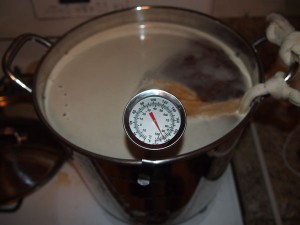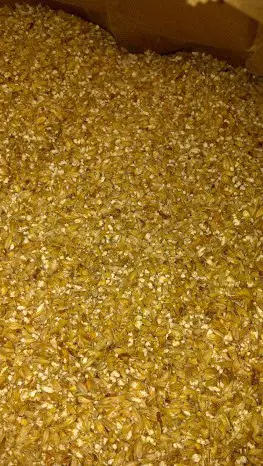There are many benefits and drawbacks to multi rest mashing. Hopefully this article will help you understand a little about multi rest mashing and more importantly be able to do it if a recipe calls for it.
you understand a little about multi rest mashing and more importantly be able to do it if a recipe calls for it.
In most all grain recipes you will only utilize a single mash temperature. This is because most American malts are highly modified and can be mashed at a single temperature with great results. This temperature is what you will “rest” the grains or steep them in hot water at for usually around an hour depending on the recipe. In a nutshell, multi rest mashing is where you mash the grains at several different temperatures for a period of time at each temperature. For example a common three rest mash could be done at 104, 140 and 158 all for thirty minutes at each temperature.
There are many benefits for multi rest mashing like increasing your efficiency, increasing fermentability, provide a maltier flavor, improve head retention and even improving mouth feel. But the most difficult part is to actually achieve a multi rest mash. Depending on the brewing equipment you have, there are a few ways that you can achieve multi rest mashing. The most common and easiest way to do this is to use metal mash tun or pot on the stove, or over a burner. In this scenario you will be heating your mash directly. You can easily heat your mash to reach your temperatures for multiple rests with this method. But, you need to be careful that you don’t char or burn the grains when adding heat. Stirring frequently when adding heat to the mash, can assist in distributing the heat evenly. For the advanced brew system owner you may have a circulation pump to fight this.
 For those of us with a cooler type mash tun, we cannot add heat directly to the mash via a stove or flame. But since the “rests” do not have to take place in your mash tun, you can still use your brew kettle on your stove for the multiple rests, then transfer to your mash tun. You are now only using your mash tun for lautering or separation of the wort from the grains. In this scenario you would just heat your mash to the specified temperatures for each rest on the stove top or burner in a kettle. When you have completed the rests you should carefully transfer the mash to your mash tun (now a lauter ton only). I say move it carefully because the mash is susceptible to oxidation at this point and you don’t want that to happen.
For those of us with a cooler type mash tun, we cannot add heat directly to the mash via a stove or flame. But since the “rests” do not have to take place in your mash tun, you can still use your brew kettle on your stove for the multiple rests, then transfer to your mash tun. You are now only using your mash tun for lautering or separation of the wort from the grains. In this scenario you would just heat your mash to the specified temperatures for each rest on the stove top or burner in a kettle. When you have completed the rests you should carefully transfer the mash to your mash tun (now a lauter ton only). I say move it carefully because the mash is susceptible to oxidation at this point and you don’t want that to happen.
If you would prefer or have no other option but to add hot water or to your mash that is fine. this is called infusion mashing, Its just a little more tricky than other methods. First since you will need to add water to bring the temperature up each time you need to start with less water. Only .75 Liters per pound of grain are needed for the first rest. This will give you more room later on to add more hot water. The hard part is to calculate how much, of what temperature water you will need to add, to bring your mash to the next resting temperature. There are many calculators online that can aid you in deciding the correct temperatures. But even then, there may be factors in your cooler mash tun, or brewing environment that might cause you to miss to temperature. When using this method always overshoot the temperature because you can stir for a min or two with the lid off to let some heat out. Finally, suggest that you keep some hot and cold addition water handy to adjust the temperature on the fly.
These techniques should allow you to be able to make any recipe out there. You should also experiment with different rest schedules and temperatures yourself to see what you can make. This is just another tool you can use to make your beer just like you want it and become an even better brewer. Happy brewing.

